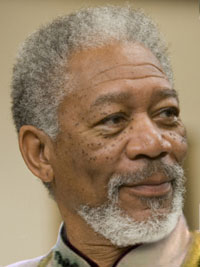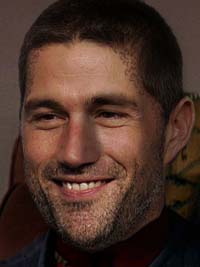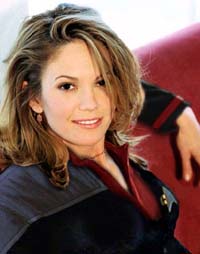|
|
Command includes
the Captain, First Officer and Second Officer. The officers are responsible
for maintaining order and discipline, as well as making all of the hard
choice decisions aboard the ship. Officers are nominally selected out of
the Line Officer departments (Operations, Engineering and Security) and
must pass Command School and the Bridge Command Qualification exams to be
considered for this program.
|
|
|
Captain

Former Captains
Fleet Captain John Q. Brhode
|
The Commanding Officer is
usually a Captain on a starship, an Admiral on a starbase, or a Colonel
for Marines. The commanding officer gives orders to his/her crew during
the mission. While off on deep space missions, problems may arise that need
to be resolved for the mission to continue. It is for this reason that COs
of vessels have been given limited powers regarding discipline. In addition
to overseeing the day-to-day operation of a starship and to ensure it carries
out its intended functions, CO's are also responsible for settling disputes
among crewmen, promoting and reprimanding officers as needed, and carrying
out the orders of Starfleet Command and his/her starbase command, as well
as interpreting and complying with Federation legal and diplomatic directives.
As such, a Commanding Officer can be called upon to answer for his own actions
and the actions of his crew.
|
 Daren Runako M'Kantu
Daren Runako M'Kantu |
|
Executive Officer

Former XO's
Commander Lysander VanderPuls Hawksley
Commander Rebecca von Ernst
Commander Cass Henderson
|
The Executive Officer (XO)
is the second-in-command of the ship or base. If something were to happen
to the Commanding Officer, the executive officer would assume command. Throughout
history, XO's have been thought of as the unofficial morale officers of
Starfleet. They are responsible, to a certain extent for the welfare of
the ship's crew. XOs need to keep the crew informed of all changes and updates
as soon as possible. In addition, the XO acts as an advisor to the Captain
giving advice and makes himself available for consultation when needed.
While the Captain may be regarded by some as untouchable, the XOs are certainly
thought of as the crew's link to him. In addition to their duties to the
CO and crew, XO's oversee transfers on and off the ship, as well as welcoming
new crewmember(s). Executive Officers may also settle non-legal internal
disputes amongst crewmen if the matter is not considered to demand the CO's
attention. Executive Officers are also called upon to lead away teams to
a planet or base when necessary.
|
 Tarin Iniara
Tarin Iniara |
|
Second Officer

Former SO's
Commander Karyn Dallas
|
In normal ship functions,
the Second Officer would typically be the Operations Officer. Their insight
into the morale of the crew gives the SO an unparalleled foreknowledge in the
expectations of the crew in key moments. Starfleet Command and
the Commanding Officer of the Galaxy have assigned the
ship's dedicated Second Officer command-level codes in the event the Captain and XO has become incapacitated.
Otherwise, the Second Officer during non-red alert situations would be the
Shift Officer on any given shift.
|
 James Lionel Corgan
James Lionel Corgan
|
|
Strategic Operations Officer
 |
The Strategic Operations officer (or StratOps) is part of the command staff aboard Federation starbases and other Starfleet installations or vessels, especially during wartime.
The duties of the Strategic Operations Officer include preparing the ship or station for the outbreak of conflict, liaising with Starfleet Command and allied commands to obtain strategic and tactical data, handling logistical matters, summarizing intelligence reports for fellow officers, and similar functions. The Strategic Operations officer can also double as intelligence officer if none is assigned.
The Strategic Operations department acts as an advisory to the command staff, responsible for coordinating all Starfleet and allied assets in within their designated area of space, as well as tactical analysis (in the absence of a dedicated tactical department) and intelligence gathering (in the absence of a dedicated intelligence department).
|
 Jaal Jaxom
Jaal Jaxom |
|
Chief of the Boat
 |
Like the Second Officer title above, this is not a stand alone position.
The senior most Chief Petty Officer (including Senior and Master Chiefs),
regardless of rating, is designated by the Commanding Officer as the Chief
of the Boat. In addition to his or her departmental responsibilities, the
COB performs the following duties: serves as a liaison between the Commanding
Officer (or Executive Officer) and the enlisted crewmen; ensures enlisted
crews understand Command policies; advises the Commanding Officer and Executive
Officer regarding enlisted morale, and evaluates the quality of noncommissioned
officer leadership, management, and supervisory training.
The COB works with the other Department Heads, Chiefs, Supervisors, and
crewmen to ensure discipline is equitably maintained, and the welfare,
morale, and health needs of the enlisted personnel are met. The COB is
qualified to temporarily act as Commanding or Executive Officer if so
ordered.
A Senior Chief Petty Officer may be called a Senior Chief of the Boat
(SCOB). A Master Chief Petty Officer may be called a Master Chief of the
Boat (MCOB).
|
 Madden Jayce
Madden Jayce |
|
| |
|
| |
|






